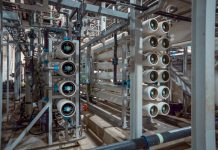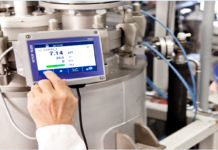India’s solar cell manufacturing capacity is projected to reach 50-55 GW by fiscal 2027, marking a five-fold increase from 10 GW at the end of fiscal 2024.
According to a report by Crisil Ratings, the expansion will be driven by the government’s strong policy push to reduce imports of photovoltaic (PV) cells and modules.
Major Investments to Support Expansion
The growth in solar cell capacity will require an estimated capital expenditure (capex) of ₹28,000-₹30,000 crore.
The funding will likely follow a 70:30 debt-equity mix.
Crisil Ratings analyzed four domestic cell manufacturers, representing 54% of total capacity as of March 31, 2024. It stated that healthy balance sheets and strong cash accruals will help maintain credit quality.
Policy Initiatives to Boost Domestic Manufacturing
The ‘Make in India’ initiative, supported by policies aimed at reducing cell and module imports, will encourage module manufacturers to adopt backward integration strategies. As a result, domestic cell manufacturing capacity is expected to rise significantly.
India’s module manufacturing capacity grew to 60 GW by March 2024, up from just 7 GW in March 2020. This growth reduced module imports to 25% of total consumption in the current fiscal year, down from 45% in the previous fiscal year.
However, cell imports remain high at 80%, with China as the primary supplier. Given India’s plan to add 60-65 GW of solar capacity by fiscal 2027, inadequate domestic cell supply could increase reliance on imports.
Government Measures to Strengthen the Industry
To drive demand for domestic cells, the government has mandated the use of cells only from its Approved List of Cell Manufacturers (ALCM). This applies to open access and net metering projects, as well as government-funded projects.
This requirement will take effect on June 1, 2024. Additionally, initiatives like the Production-Linked Incentive (PLI) scheme and domestic content requirements will boost local manufacturing.
These measures have already led to announcements of 45-50 GW in additional cell capacity. This will increase India’s total manufacturing capability to around 55 GW over the next two fiscal years.
With greater domestic cell production, India could capture 70-80% of the module cost internally. Without domestic cells, this share drops to just 40-50%. The proportion of domestic module capacity supported by local cells is expected to exceed 50%, up from less than 15% in fiscal 2024.
Financial Viability of Solar Cell Expansion
Despite the large-scale capex, the average annual capex intensity will not see a significant rise. It is projected to remain at 1.3-1.5 times over the next three years, compared to 1.2 times over the past three fiscal years.
Expansion in the earnings base will help manage the financial impact. This growth is driven by increased module capacity and strong operating margins under ALMM implementation. The expected payback period for this investment remains healthy at 4-5 years.
Challenges in Cost Competitiveness
Currently, domestically manufactured cells will cost 80-90% more than imported ones.
This is due to higher conversion costs for wafers to cells, lower economies of scale in India, and China’s aggressive pricing strategies. While government incentives like the PLI scheme will help cover some costs, solar project developers may still face higher expenses.
Continued Policy Support Essential for Growth
To ensure sustained demand for locally produced cells and modules, the government must continue implementing supportive policies. Non-tariff measures such as ALCM and ALMM will be crucial in maintaining competitiveness.
As reported by pv-magazine-india.com, the initiatives will boost India’s self-reliance in solar manufacturing. They will also reduce dependence on imports.
































